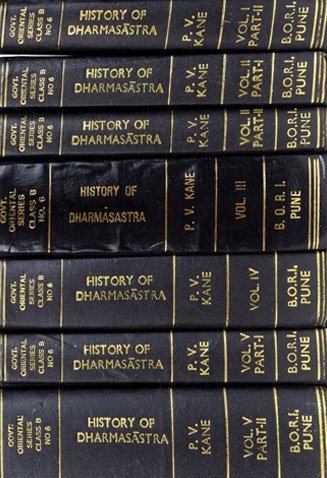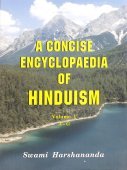Antyeshti, Antya-ishti, Antyeṣṭi, Amtyeshti: 16 definitions
Introduction:
Antyeshti means something in Hinduism, Sanskrit, Marathi, Hindi. If you want to know the exact meaning, history, etymology or English translation of this term then check out the descriptions on this page. Add your comment or reference to a book if you want to contribute to this summary article.
The Sanskrit term Antyeṣṭi can be transliterated into English as Antyesti or Antyeshti, using the IAST transliteration scheme (?).
In Hinduism
Dharmashastra (religious law)
Source: Shodhganga: Facts of society in the ManusamhitaAntyeṣṭi (अन्त्येष्टि) is a very common term to mean the funeral. After th e death the funeral ceremony is performed by uttering mantras with related rituals. The ceremony has not been dealt by Manu. But we have only a flash of this in Manusaṃhitā II.16, where instead of this familiar term the lawgiver has used the term śmaśāna to mean funeral. It is added that like all other ceremonies started with niṣeka this also is required to perform with the regulation of śāstra by uttering mantras. In the Vedic age, the cremation system is performed by the sacrifice through the body. At last the human body turns into bhaṣma. But the Gṛhyasūtras describe the whole ceremony and custom in detail.

Dharmashastra (धर्मशास्त्र, dharmaśāstra) contains the instructions (shastra) regarding religious conduct of livelihood (dharma), ceremonies, jurisprudence (study of law) and more. It is categorized as smriti, an important and authoritative selection of books dealing with the Hindu lifestyle.
Arthashastra (politics and welfare)
Source: Knowledge Traditions & Practices of India: Society State and Polity: A SurveyAntyeṣṭi (अन्त्येष्टि) refers to the ceremony of “last rites” and represents one of the sixteen saṃskāras, or “ceremonies” accompanying the individual during the Gṛhastha (householder) stage of the Āśrama way of life. These ceremonies (e.g., saṃnyāsa-saṃskāra) are community affairs and at each ceremony relations and friends gather for community eating.

Arthashastra (अर्थशास्त्र, arthaśāstra) literature concerns itself with the teachings (shastra) of economic prosperity (artha) statecraft, politics and military tactics. The term arthashastra refers to both the name of these scientific teachings, as well as the name of a Sanskrit work included in such literature. This book was written (3rd century BCE) by by Kautilya, who flourished in the 4th century BCE.
Shaivism (Shaiva philosophy)
Source: Brill: Śaivism and the Tantric TraditionsAntyeṣṭi (अन्त्येष्टि) refers to “funeral rites”, as detailed in the Pratiṣṭhātantra (“Śaiva installation manuals”).—As Sanderson demonstrates in “The Śaiva Age: The Rise and Dominance of Śaivism During the Early Medieval Period” (2009), Tantric Buddhism devised a number of ceremonies in the domain of public religion following the Śaiva models, such as consecration (pratiṣṭhā) and funeral rites (antyeṣṭi). Tantric Buddhist manuals called maṇḍalavidhis teach the details of these public social rituals. These manuals closely resemble the Śaiva Pratiṣṭhātantras and Paddhatis.
Source: eScholarship: The descent of scripture: a history of the KamikagamaAntyeṣṭi (अन्त्येष्टि) refers to certain Śaiva funerary rites, according to the Kāmikāgama: an ancient Śaiva Āgama scripture in 12,000 Sanskrit verses dating to at least the 5th century and represented as an encyclopedic account of ritual instructions (kriyāpāda).—In modern print editions, the Kāmika-āgama is structured in two major parts. The Uttarabhāga consists of 98 chapters (paṭalas) [...] A life-cycle ceremony for old-age initiates is outlined in Chapter 26. And we find details of Śaiva funerary rites (e.g., antyeṣṭi) in Chapters 27, 28, and 29.

Shaiva (शैव, śaiva) or Shaivism (śaivism) represents a tradition of Hinduism worshiping Shiva as the supreme being. Closely related to Shaktism, Shaiva literature includes a range of scriptures, including Tantras, while the root of this tradition may be traced back to the ancient Vedas.
Languages of India and abroad
Marathi-English dictionary
Source: DDSA: The Molesworth Marathi and English Dictionaryantyēṣṭi (अंत्येष्टि).—f S The last rites; funeral solemnities.
Marathi is an Indo-European language having over 70 million native speakers people in (predominantly) Maharashtra India. Marathi, like many other Indo-Aryan languages, evolved from early forms of Prakrit, which itself is a subset of Sanskrit, one of the most ancient languages of the world.
Sanskrit dictionary
Source: DDSA: The practical Sanskrit-English dictionaryAntyeṣṭi (अन्त्येष्टि).—f.
Derivable forms: antyeṣṭiḥ (अन्त्येष्टिः).
Antyeṣṭi is a Sanskrit compound consisting of the terms antya and iṣṭi (इष्टि). See also (synonyms): antyāhuti.
Source: Cologne Digital Sanskrit Dictionaries: Shabda-Sagara Sanskrit-English DictionaryAntyeṣṭi (अन्त्येष्टि).—f.
(-ṣṭiḥ) A funeral sacrifice. E. antya, and iṣṭi sacrifice.
Source: Cologne Digital Sanskrit Dictionaries: Aufrecht Catalogus Catalogorum1) Antyeṣṭi (अन्त्येष्टि) as mentioned in Aufrecht’s Catalogus Catalogorum:—[dharma] K. 164. Pheh. 3. Oppert. Ii, 6874.
—Āśval. B. 1, 152.
2) Antyeṣṭi (अन्त्येष्टि):—Hiraṇyak. Bd. 363.
Source: Cologne Digital Sanskrit Dictionaries: Monier-Williams Sanskrit-English DictionaryAntyeṣṭi (अन्त्येष्टि):—[from antya > antika] f. funeral sacrifice.
Source: Cologne Digital Sanskrit Dictionaries: Goldstücker Sanskrit-English DictionaryAntyeṣṭi (अन्त्येष्टि):—[karmadharaya compound] f.
(-ṣṭiḥ) A funeral sacrifice. Comp. antyāhuti. E. antya and iṣṭi.
Source: Cologne Digital Sanskrit Dictionaries: Yates Sanskrit-English DictionaryAntyeṣṭi (अन्त्येष्टि):—[antye-ṣṭi] (ṣṭiḥ) 2. f. A funeral sacrifice. Also antyāhutiḥ.
[Sanskrit to German]
Sanskrit, also spelled संस्कृतम् (saṃskṛtam), is an ancient language of India commonly seen as the grandmother of the Indo-European language family (even English!). Closely allied with Prakrit and Pali, Sanskrit is more exhaustive in both grammar and terms and has the most extensive collection of literature in the world, greatly surpassing its sister-languages Greek and Latin.
Hindi dictionary
Source: DDSA: A practical Hindi-English dictionaryAntyeshti in Hindi refers in English to:—(nf) last/funeral rites..—antyeshti (अंत्येष्टि) is alternatively transliterated as Aṃtyeṣṭi.
...
Kannada-English dictionary
Source: Alar: Kannada-English corpusAṃtyēṣṭi (ಅಂತ್ಯೇಷ್ಟಿ):—[noun] the funeral rites; obsequies.
Kannada is a Dravidian language (as opposed to the Indo-European language family) mainly spoken in the southwestern region of India.
See also (Relevant definitions)
Partial matches: Ishti, Sti, Antya.
Starts with: Antyeshtikriya, Antyeshtikriyapaddhati, Antyeshtipaddhati, Antyeshtiprayashcitta, Antyeshtiprayoga, Antyeshtiprayoge ekadashahavihitadanani, Antyeshtisamagri.
Ends with: Agnihotrantyeshti, Shrautantyeshti.
Full-text: Antyeshtikriya, Antyahuti, Antiyeshti, Amtyeshti, Anteshta, Mandalavidhi, Pratishthatantra, Pratishtha, Samskara, Shraddha, Ashvalayana.
Relevant text
Search found 8 books and stories containing Antyeshti, Antya-ishti, Antyeṣṭi, Antya-isti, Antyesti, Antya-iṣṭi, Antyēṣṭi, Antye-shti, Antye-ṣṭi, Antye-sti, Amtyeshti, Aṃtyēṣṭi; (plurals include: Antyeshtis, ishtis, Antyeṣṭis, istis, Antyestis, iṣṭis, Antyēṣṭis, shtis, ṣṭis, stis, Amtyeshtis, Aṃtyēṣṭis). You can also click to the full overview containing English textual excerpts. Below are direct links for the most relevant articles:
Harshacharita (socio-cultural Study) (by Mrs. Nandita Sarmah)
7. Customs (4): Antyeṣṭi Saṃskāra < [Chapter 6 - Other Socio-Cultural Aspects]
2. Dissimilarities (3): Customs and Sacraments < [Chapter 8 - Comparative Society as described in the Kādambarī and the Harṣacarita]
Manusmriti with the Commentary of Medhatithi (by Ganganatha Jha)
Verse 5.64 < [Section IX - Other forms of Impurity]
Verse 5.79 < [Section IX - Other forms of Impurity]
Verse 11.197 < [Section XXII - Expiation for Brāhmaṇas acquiring Property by Improper Means]
Women in the Atharva-veda Samhita (by Pranab Jyoti Kalita)
3(k). Charm to Obtain a Husband or a Wife < [Chapter 5 - Women in the Rites and Rituals of the Atharvaveda]
Formal Education System in Ancient India (by Sushmita Nath)
Number of Saṃskāras < [Chapter 2 - Rituals of the Education System]
The Sacrifices of Rajasuya, Vajapeya and Ashvamedha (study) (by Aparna Dhar)
Śrauta and Gṛhya Karma < [Chapter 2 - Vedic Sacrifices described in the Śatapatha Brāhmaṇa]
Brahma Sutras (Shankaracharya) (by George Thibaut)
III, 1, 6 < [Third Adhyāya, First Pāda]
Related products
